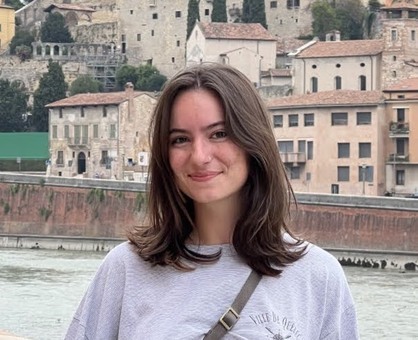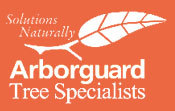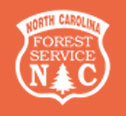In a Nutshell
A College Senior's Exploration of Urban Forestry Careers
Meet a university arborist:
Wendy Williams
|
“I loved the smell of moist earth down by the creek, and now that I live near Mebane on a busy |
|
|
Photo credit: Anton L. Delgado for Elon News Network of Elon University |
|
Wendy was always immersed in her parents' large vegetable garden as well as in the process of food preservation, furthering her passions in gardening and ornamental plants with the help of her mother and grandmother.
In high school, her passions still paved a path for her future as she continued to lean towards forestry or wildlife biology. She took her first horticulture classes her sophomore and junior years, participated in her school’s FFA program, and grew to love horticulture from her agriculture teacher Cyrus Vernon. After school, on weekends, and over the summers she took time to work in a local greenhouse, coincidentally run by Mark Danielely, a now former Elon extension agent. It was here that Wendy was forced to put second what she read in her textbooks and learn the hands-on applications of gardening and equipment usage.
Just one county over, Wendy started working at Elon soon after graduating from high school and had plans to start her own business. She soon realized that she really enjoyed working there and if she had continued down her original path, she wouldn't have had enough time to finish all the projects she wanted to complete on campus. After spending 15 years as a gardener and temporarily taking on a supervisor role, an arborist position was created, and she knew she had to take it. Apparently, others thought the same when she was told that it was a surprise it took her so long to ask.
Wendy continues to work as an ISA certified arborist (and will mark 30 years at Elon in the summer! Congrats Wendy!) and is responsible for maintaining and planting trees. Her job involves training them to grow properly as well as pruning and removing dead branches. She and her team compile a tree removal list at the end of the year after assessing all the trees on campus and recommend ones that need to come down. In addition to this annual list, she navigates the challenge of worrying about the safety of students, staff, and visitors from falling limbs on a daily basis, especially after large storms. However, the challenges are not large enough to overcome her genuine love for nature and the satisfaction of transforming a landscape into a space that can be appreciated by everyone.
Even after working in the field for over 25 years, she is constantly learning new things about the species on campus. After taking a native plant ID course through the NC Botanical Garden, she was taken aback to learn that a number of species she had been planting on campus turned out to be invasive and harmful for surrounding plants, insect, and bird species. Building off this new knowledge, she strives to incorporate it into her work now, as well as into what she may plan for the campus in the future. When speaking on the topic of urban forestry, Wendy expresses her desire to see more emphasis on making sure the habitats we are creating are less fragmented and are able to give pathways for plants and animals to survive the ever growing urban sprawl.
I concluded our interview by asking her the question: “What would you say to young adults and teenagers interested in learning about urban forestry or wanting to pursue it as a career?”
“I think it’s a great career, and I think as with a lot of trades, particularly being on the hands-on point of view, a lot of kids have been going more into the professional areas, but there is a big need for arborists. I think urban forestry is going to expand too on a municipal level, but I would recommend that they would get as much education as they can when they’re young. And the next best thing, or the thing you should do after that is find a person that you respect that will promote you in your career and that you can continue to learn from them. And if you’re going to go into tree work, find a person that works safely and that’s interested in teaching.”
Meet a Climbing Arborist:
Andrew Wagner
|
|
(John) Andrew Wagner, with Catawba Tree Experts grew up in Maryland, constantly around the horticulture business. His dad owned a tree care company, Top Notch Tree Service, and his mom owned an herb nursery. Andrew credits his parents with his own interest in horticulture. His initial career idea, however, was pre-med. While attending Warren Wilson College in Swannanoa, North Carolina, he recognized that changing his biochemistry major and jumping tracks to tree care would supplement the skills and knowledge he already had as well as his interest in the field. |
Andrew grew up in Maryland, constantly around the horticulture business while his dad owned a tree care company, Top Notch Tree Service, and his mom owned an herb nursery. Although small, Andrew credits this as a start to his interest in horticulture. His initial career idea, however, was pre-med. While attending Warren Wilson College in Swannanoa, North Carolina, he recognized that changing his biochemistry major and jumping tracks to tree care would supplement the skills and knowledge he already had as well as his interest in the field.
As a work college, Warren Wilson provides its students with a unique opportunity to gain work experience while enrolled in the 4-year university, building hands-on skills before having to go into a job. It was here that Andrew earned his International Society of Arboriculture (ISA) certification, the skills he needed for a career in arboriculture, and the beginning he needed to jump start a career in forestry.
“It was a really great experience. I highly recommend my alma mater, Warren Wilson, for folks that are interested and that want to have the work experience. So yeah, that was kind of what got me into it. And I’ve been sticking it out ever since, kind of just messing around. Yeah. It’s been fun.”
After graduating from Warren Wilson, he had an internship with ISA and spent time inAsheville working with professional arborist, John Parmenter. Andrew recognizes Parmenter as a great influence in his life who even got him into tree climbing competitions!
Andrew worked with John in Asheville before finally creating his own business, Wagner Tree Experts in 2008. Starting out small like all personal businesses, Andrew bought a work truck, his tools, and some business cards to get his name out there. He put flyers up in coffee shops and posted ads in the local free magazine, The Mountain Xpress. His business grew into a great success!
Growing up around his parents’ business, he was used to the amount of work it took to run one, but he does say that it is no job for the weak. Making challenging decisions, bearing the responsibilities, and training and trusting employees with your own company had Andrew daydreaming about having someone else handle the duties of a business.
“Training employees has always been tough just because you’re putting a lot of faith in someone else’s interest. And there’s so much training involved in shepherding new people into this industry, that you’re really dedicating a lot of your own personal time and investment to people.”
Andrew wouldn’t have had the learning and life experiences from Wagner TreeExperts, however, if he hadn’t done it in the first place. Andrew also gained the satisfaction of knowing that the employees he trained will be able to take their tree care knowledge with them anywhere, whether they remain in the field or not. That is something Andrew takes great pride in.
I asked Andrew who he sees working in the industry of climbing arborists. He said there is a wide range of people, from those who just turned 18 to folks transferring in from other jobs during their late 20’s. Andrew even meets individuals who are 50-60-years-old and have been in the climbing arborist field for decades.
Being a climbing arborist comes with the attitude of freedom and excitement. Andrew says it’s the “nature of the beast” that these adventuresome spirits tend to travel around and work for subcontractors, instead of sticking to one area and one company. Andrew noted that it isn’t a bad thing working in one area; however, when it comes to having educated arborists on deck, it can get tricky. This is especially true when handling ornamental trees, such as Japanese maples. Lots of people see arborists doing the big tree jobs, with the ropes and chainsaws but smaller trees like Japanese maples need finer, educated touches with attention to detail to ensure proper pruning.
Andrew says that recent college grads are always great students since we are still very much in that learning mindset. With such a mindset, the college grads are unsure sure where they want to land; often trying things out to figure out where they want to eventually settle. He loves teaching fresh graduates from six months to six years, or however long it takes for them to decide where they want to go during their next adventure.
Talking with Andrew, he seems to be an educator at heart, and I’m sure he has been a mentor for many of his trainees over the years. To young adults interested in forestry as a career, Andrew says that having a versatile skill set will serve you well in the industry. As a whole, forestry deals with lots of data collection that is necessary while being up in the canopies and pruning, as well as when you start aging out of climbing. Maintaining a versatile skill set in your back pocket means you can continue an amazing forestry career regardless of your age.
Meet a Utility Arborist:
Wil Ortiz
All his life, Wil knew that his love lay in the outdoors. Growing up in Puerto Rico, his mom called him Lagartijo, which is an endemic climbing lizard throughout the island. Wil was always outside; running around somewhere and constantly up in the trees.
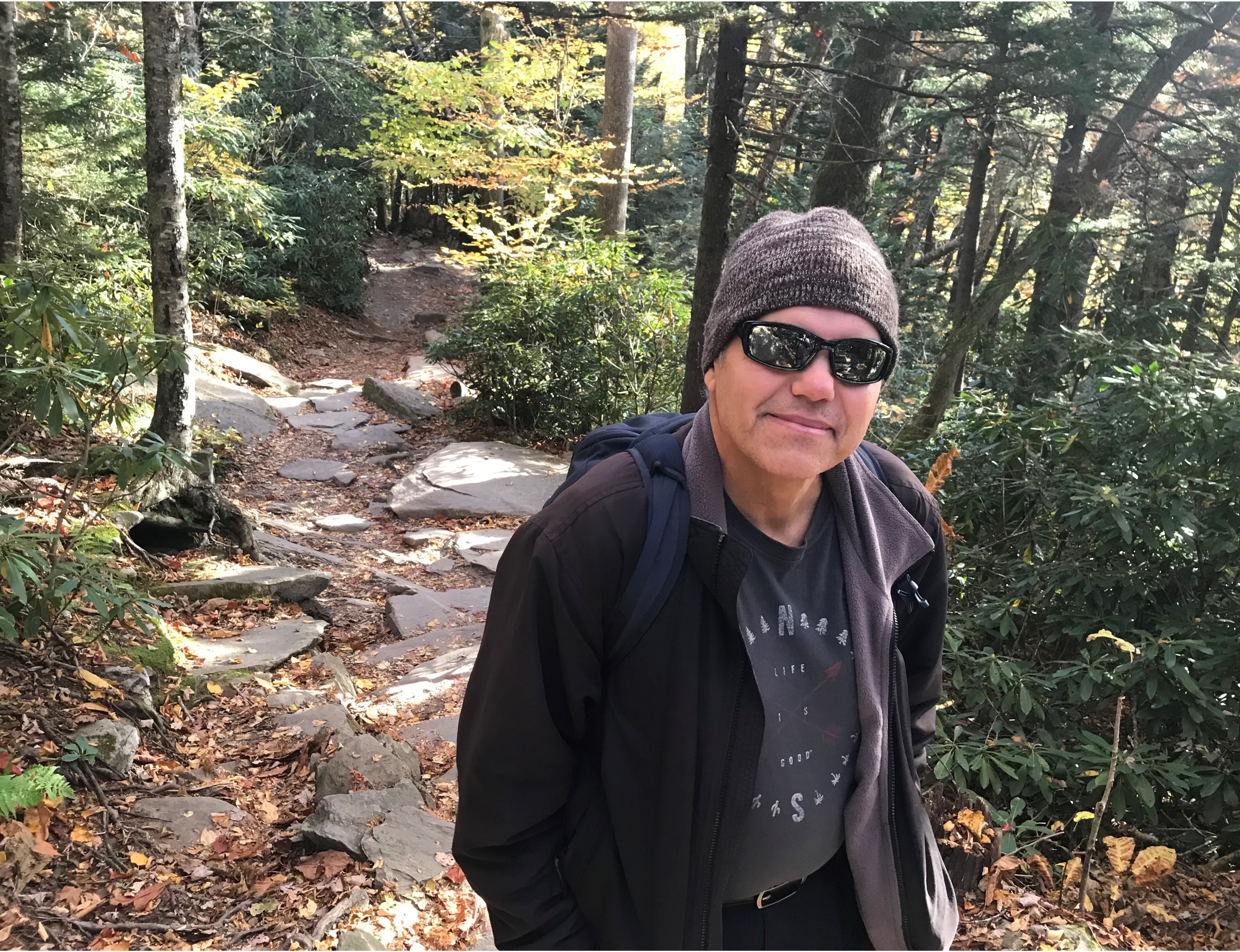 |
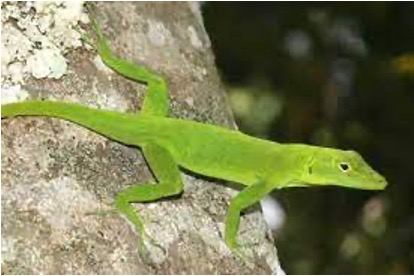 |
Holding true to his dream after spending the rest of his young adulthood in New York, he moved out West and worked in the forestry industry doing harvest, inspection, and timber marking. He worked for the Forest Service in California and Wisconsin, envisioning his career continuing down this path, hopefully working as a park ranger or somewhere else in the forestry field. However, spending all this time outdoors and away from family, Wil decided he wanted a job closer to home. With the help of his wife, they found an urban forester position in Chicago.
“Chicago? Forestry? Chicago?! What is this about?”
Intrigued by what seemed like an impossible job to hold in a dense urban environment, Wil called the company. They informed him that he would be identifying trees, collecting data, and talking to people and explaining pruning practices for powerlines. Wil jumped in feet first, knowing nothing about what he was getting himself into. What he found out was that making this move from Wisconsin to Illinois was the best decision he ever made.
There, he worked in the Commonwealth Edison Electric region for five years as a planner for the consulting company Environmental Consultants Inc. and was responsible for planning work for tree crews. He then proceeded to get hired by the utility side of the company. After working there for a while, an old manager gave Wil a call and asked if he wanted a job as Program Manager for Union Power Cooperative in Monroe, North Carolina. This was another instance where Wil had to jump in feet first. He wasn't familiar with the utilities in North Carolina, and he was starting from the ground up with this newly created position. He didn't have many people to turn to for help on how to start, but this didn't steer him away. He was excited to be able to make a program exactly how he thought was best.
Right from the beginning, Wil had his work cut out for him. Within the first week, he had to oversee the removal of three tree houses located just feet away from high voltage power lines and close enough for anyone to grab on to. Everywhere he looked, power lines were hiding in the trees, just waiting for a "hotspot" to happen. A hotspot is an area where a tree is close to a power line, and since trees contain water or can become wet from rain showers, they can potentially conduct electricity and cause outages and unsafe environments.
“And, had there been some formula, you know, to go by, a script, that would have been way easier for me because I had to come up with spreadsheets on my own. I had to track everything on my own. There was no help from the utility on that realm at all because there had never been a program. And so, I welcomed the challenge and just dove right in.”
Having this experience, Wil knew others were sure to face the same challenges. Wil knew that others were sure to face the same challenges. This is why he generously lends a helping hand to anyone who needs it, saying, "You don't need to reinvent the wheel. Let me send you some things."
The opposite of a "gatekeeper", Wil truly cares about making sure people are safe, and that the work done is consistent, reliable, and easily adaptable so that it stays relevant with the industry’s ever-changing nature. For example, the two types of trees that caused the most issues were Leyland Cypress and Bradford Pear. Before Wil came on, pruning practices made sure that limbs were 10 feet away from power lines. Immediately, Wil implemented a 15-foot plan, as well as suggesting a tree replacement program and becoming part of Tree Line USA. Today, Wil still works for Union Power Cooperative and acknowledges that trees aren't even the main threat to power lines anymore. It's squirrels! Wil is constantly expanding his knowledge in other realms too, such as pollinator habitats, environmental concerns, and water quality issues.
“So, a lot of it is exposure. And I think it's putting yourself out there to be willing to learn these things. If I learned something new every day, that's a phenomenal week.”
Concluding the interview, like I do with all of my interviewees, I asked, “What would you say to young adults and teenagers interested in learning about or urban forestry? or wanting to pursue as a career?” Here is Wil’s thoughtful response.
“Really, find somebody who's in it already. There are so many of us out there who are willing to share what we learn. Are we experts? I don't ever consider myself to be an expert, I will never reach that level because of the ever-changing nature of the challenges. It just comes down to what changes, and are you willing and adaptable to make changes to target that new goal or that new challenge.
“So, finding someone who's willing. And just about every utility in the U.S. has some kind of person like myself out there. So, I make myself available…I've taken the time to talk with someone looking for input if they call me [saying], “Hey, Wil, you have an hour for a couple of questions?” And it sometimes ends up being three hours; that's fine because they have a lot of questions. We may schedule a few separate sessions. And I'm hoping that with the information they receive and are able to put to practice, they may be able to one day pay it forward.”
Meet a University Arborist:
Jim Musseter
|
What seems like forever ago, I interviewed Jim Mussetter, the University Arborist for Wake Forest University in Winston-Salem, North Carolina. And like so many of us, Jim wasn’t sure what he wanted to do when entering Sandhills Community College in Pinehurst, NC. He knew he had always liked being outside and had some background in landscape maintenance, so he decided to enroll in their landscape gardening program. Within the program he had to pursue an internship to supplement the degree, and as a last-minute opportunity, Jim took a position with Preston Stockton at Reynolda Gardens at Wake Forest. Then when an opportunity arose to start a permanent position at Wake Forest, Jim made the smooth transition to a full-time role with the University. |
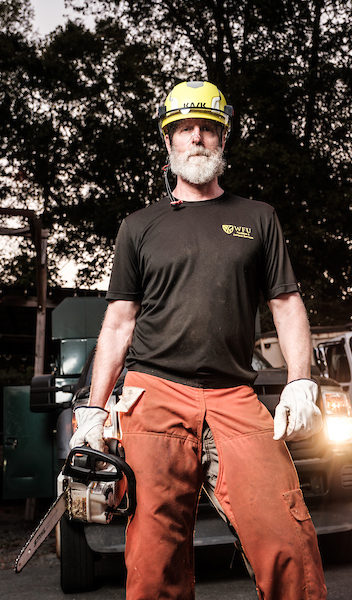 |
|
|
Photo Credit: Ken Bennett for Old Gold & Black of Wake Forest University |
||
Here, Jim first tried a horticulture position and found that he was looking for something different when a spot opened up with the tree team. Even though he didn’t have too much experience with trees, he took the chance. Over the course of his career at Wake Forest, Jim took on the role of the University Arborist, stuck with it for 25 years, and was recently promoted to Landscape Manager! Jim attributed this role to helping grow his eagerness to learn more about trees, like how they grow, identifying native species, and the issues that come with each species.
“I think I've learned a lot about how trees react to urban stressors, epecially with willow oaks. Their resilience is amazing! They're under assault on a daily basis, and somehow in their little, small cut out of earth, they become huge.”
We got on the topic of the discrepancies between common plant names and how a red maple can mean two or more completely different species, depending on which area of the country, or even just the state, you come from. This is where the functionality of the Latin language comes in: plant nomenclature. Jim had met a grad student from Peru that had a specialization in trees and was talking about a Quercus alba, or white oak. No matter the language barrier, plant lovers are able to communicate with each other all across the world!
I remember one of my professors at NC State had a similar experience, but he was the one in a foreign country. All he had to do was go to a garden and ask, “Quercus alba?”, and the garden manager would take him to the tree.
Jim then talked about who inspired him or influenced his way of thinking when it came to arboriculture. He credited a Wake Forest professor, Miles Silman, for his exuberant passion for trees and the environment. I was lucky enough to have professors just like this for my introductory classes in horticulture at State; one being the one I mentioned earlier, Bryce Lane. The first ever horticulture class I took, Home Horticulture, was with Professor Lane and just the raw passion and stories he told were enough to solidify my minor in Horticultural Science.
When I asked Jim how he would like to see the future of urban forestry go, he is really interested in having more advocates for the protection of trees on development sites. Lots of times it is simply cheaper to clear-cut a whole couple of acres than to carefully protect and conserve the existing trees on the site, a battle developers and conservationists have been fighting for a long time.
“Sometimes it seems like all they have to say is, 'Well, that's going to be super expensive.' And that's all they have to do is threaten a huge cost and the trees are forgotten about.”
Lastly, what would Jim say to young adults and teenagers interested in the field of urban forestry?
“I want to quote The Lorax [by Dr. Seuss]: 'Unless someone like you cares a whole awful lot, nothing is going to get better. It's not.'
"I think the work is incredibly fulfilling. You're making a change to other people's lives and the environment. The satisfaction involved and the freedom involved in the work -- I mean, it’s been a long time since I've done anything else and I don't know what anything else is like. To know you're making a difference is a huge deal.
"I know the impact trees has on other people. If it's just shade, people are enjoying trees. When I'm planting small trees, knowing I'm not gonna be around to see them when they’re 100 years old but think about how that tree will impact so many lives in a campus environment! The groups of students that are passing through each year, they're impacted by those trees.
"So I guess the biggest thing is how fulfilling the work is. It's important to me.”
Meet a Not-for-Profit Arborist:
Kate Bolkin
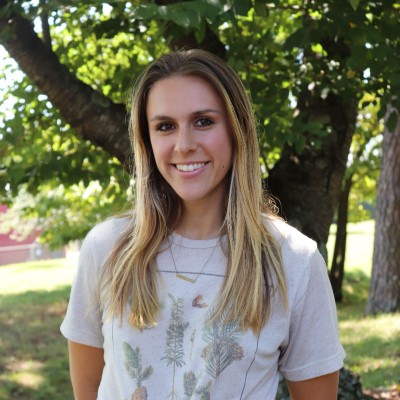 |
The youngest interviewee I had, Kate Bolkin, talked with me about her journey across the country, starting in her home state of California and landing in Charlotte, NC. Ever since a young age, Kate has been interested in conservation and caring for living things. Like myself and lots of kids, it was more focused on animals and wildlife. |
Kate began working at a wildlife conservation center in California to care for animals, such as birds that had been injured by automobiles or cats. Although her work at that center was important, she found her duties were more reactive to wildlife dangers than proactive. In other words, Kate wanted to pursue conservation tasks that protected wildlife from endangerment. Once Kate began taking more horticulture and botany courses in college, she discovered her love for plant species; specifically, how plants and vegetation are at the root of wildlife conservation.
“I realized that the best way to protect animals is to protect their habitat, and that starts with botany and plant life and sustainable ecosystems.”
After graduating from the University of Wisconsin-Madison in May 2020, Kate moved to Charlotte and began her career at TreesCharlotte in August 2020. Starting as a community educator, she got her arborist certification a year later and gained the title of community arborist. She talked to me about how some people’s initial thoughts of urban trees may focus on the ecological impacts of trees within urban environments. However, trees are also critical to the health of humans, both mentally and physically.
Other things that people may not think about in regard to urban trees are their economic benefits to neighborhoods, private properties, and businesses, or their ability to retain stormwater and reduce the intensity of summer heat in urban environments. Kate has had many responsibilities as the community educator at TreesCharlotte, from creating lesson plans for kids to speaking with civic groups about the importance of trees and how those groups can get involved in urban forest conservation. When Kate wears her arborist hat, she plans tree planting projects for the organization and leads educational workshops, such as how to prune trees and the value of invasive species removal. Kate also wears a third hat -- facilitating all social media outreach for TreesCharlotte and planning operations for their CommunityWoods Program.
So, what made Kate so interested in wildlife and conservation? She credits the names of individuals we all know and love, like Jane Goodall and Steve Irwin, two names I’m sure we all heard when we were growing up. Kate also was inspired to focus on animals because a family member is an animal rights activist. So being around that relative and her kids really influenced Kate’s thinking about caring for the environment.
As our interview was wrapping up, Kate elaborated on how she would like to see the future of urban forests go, and that starts with more serious tree protection ordinances. Beginning June 1 st of this year, the City of Charlotte will adopt a Unified Development Ordinance (UDO), which will add stronger tree protection ordinances for the city! A huge step in the right direction for the Queen City and her trees. She also wants to see more care for road verges (small land strips ocated between roads and sidewalks) as well as other small strips of land that are not viable for trees but are perfectly suitable for pollinator species and smaller, low-growing plant species that are native and/or non-invasive.
I know I’ve felt that I could do more for our environment and even feel powerless when it comes to rapid change and habitat fragmentation in urban environments. Kate talks about this and how it is all about showing up. She says that lots of times land use decisions usually go in favor of developers because the people who advocate for the environment don't attend the public hearing or write their local officials. With few or no environmental advocates speaking against a proposed development project, city council members are inclined to vote in favor of the developer. Remember, you don't have to be anything rash! Sharing information on social media or talking with family, friends, and neighbors is enough to start the conversation and keep it going.
“A really large percentage of the trees that we're seeing being lost in Charlotte is on pre-existing single-family lots.
"[Concerned citizens] think,'The trees are coming down because [developers] are clear-cutting forests and building up all these homes', which is true. But what we're seeing a lot of [is more like this:] There will already be a home there and people are just choosing to remove a tree because they're scared [of the tree falling], or they want to put an extension on their home, or for this or that reason.
"[They cut the tree] with the mindset that it's only one tree so it's not that big of a deal. But thousands of people and tens of thousands of people have that mindset. So, if you can be the person who advocates for trees and maybe convinces a friend or a family member or another adult in your life to preserve that tree, that does have an impact."
Meet a Municipal Arborist:
Laurie Reid
| As a fellow lover of creepy crawlies and things with many legs, I saw a bit of myself in City Arborist, Laurie Reid. Growing up in Maryland, she remembers taking a plain piece of 2x4 from her dad’s excess wood bin and pinning down the life stages of gypsy moths with her mom’s sewing pins. She has always been interested in learning and asking questions, especially with looking at nature, adding that “you can’t study insects without studying plants.” | 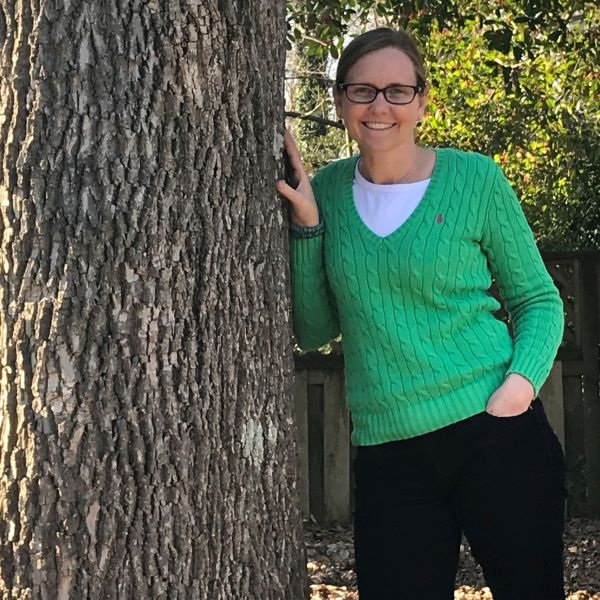 |
In 1994, Laurie left Maryland for South Carolina to study entomology at Clemson University. She talked about her senior undergrad project on garden design. She explored if butterflies preferred masses of colors, colors in linear patterns, or just random colors everywhere. After undergrad, Laurie considered being a pediatrician and going to med school, but she followed her heart to pursue her Master’s in entomology, and the rest was history.
Laurie’s first job was in Moncks Corner, South Carolina at Cypress Gardens. Everyone’s dream is to find a job that they love right out of college, and that is exactly what Laurie found. She was in charge of running the butterfly house and taking care of Koi fish, birds, and caterpillars. The other side of her job was being an environmental educator. Ranging from young kids to senior citizen groups, Laurie would talk about the biodiversity of the local ecosystem in this small, rural town of South Carolina. This ecosystem was a swamp. Thus, Laurie would spend time educate Garden visitors about baby alligators (and showing off the alligators, too) and doing dip net tests to examine insects, fish, and tadpoles.
Hearing this story took me back to when I was a kid growing up in the swampy area of coastal Virginia. I remember learning about the same things when I was in school and absolutely loving it.
As Laurie discussed her following positions after leaving Cypress Gardens, it seems as though Laurie did in fact win the job lottery. Laurie moved 100 miles from Moncks Corner to Columbia, South Carolina, to work as the SC Forestry Commission’s entomologist. It was also here that she got to know the ins and outs of forestry, which was a challenge in itself having come from and entomology background.
“That's the one time I thought, 'Gosh! I’d go back and get a forestry degree and become a forester.' I really liked urban forestry when I was there. I thought it was fun getting to work with cities.”
Laurie stayed with the SC Forestry Commission for almost 11 years, then made another move up to Charlotte, North Carolina in 2014 to her current job. For almost nine years, Laurie has worked for the City of Charlotte and for just over two of those years, she has served as the city arborist.
Today, Laurie works with the municpality's landscape management group, which looks over everything in the public right of way. These rights of way include sidewalks, road verges and grassy medians in the center of roads. Laurie shared with me all the other facets of city management that she has learned from other departments and her coworkers. She expressed how fun it has been to learn about other people’s perspectives and experiences.
I asked Laurie who has helped shaped her thinking; if she had any mentors. Laurie did not hesitate to mention her college advisor, Joe Culin. Ever since her freshman year, Laurie worked with Joe and saw his passion for entomology and his desire to share the world of insects with non-entomology majors. Laurie remarked that her style of teaching is greatly influenced by Joe’s enthusiasm and charisma in the classroom. She went on to tell me a story about a class he taught non-entomology majors, focusing on insects showcased in films. Joe would host students at his house to watch movies about insects, complete with popcorn and sodas. The class would talk about the film and how insects are used in art, photographs, jewelry, and clothing.
Another mentor Laurie talked about was Tom Smiley at Bartlett Tree Experts. She said he was more like a sponsor than anything, always giving Laurie new and different opportunities. One specific opportunity was meeting people from other countries to discuss how tree care is accomplished internationally.
Talking to Laurie was a delight. Something I really respected was how inquisitive she is as an adult. I feel that as a kid we are asking questions all the time everywhere we go, but as we grow older, at least speaking for myself, it is more intimidating to ask questions and say, ‘I don’t know’. However, Laurie, again and again, said that this is something that has carried her along in her career.
“I'm not a person that is afraid to say, 'I don't know about that subject'. I feel like it's helped me a lot in my career to not pretend I know something or pretend I know more than I actually do. I ask questions and I inquire, and I think that people have more respect for not acting like you know everything. I feel confident in what I know and myself to say, 'I need help. I don't know what that means. Help me with this.'
"So I try to not let that get me down. I've got younger kids, and I always tell them, 'Don't be afraid to ask questions. Always keep learning. If you don't know something, just ask because sometimes people don't know that you don't know. And it's okay to not know.'”
Laurie carried this lesson over into my last question when I asked what she would say to people interested in urban forestry.
“Yeah, I think it kind of goes back to being curious, asking questions, and learning as much as you can. There are a lot of great municipalities around and if someone's interested, they could call and just say, 'Hey, I’m interested in this career, what do you do? What kind of degree do you need to have? What kind of work do you have to get into?'
"So, if you have a local forestry agency, and most states do, they often have an urban forestry and community forestry group, and you could always ask them if they could connect you with someone in the city.
"I love talking to people about what I do and if you're in college, or you're interested, go to an [International Society of Arboriculture] conference. North Carolina has an Urban and Community Forest Council, and they put on education programs. South Carolina has Trees SC, where they do different programs. But for me, it's to be curious and ask questions.
"Put yourself out there and learn as much as you can, because I’ll never learn as much as there is out there. There's just so much to know about urban forestry which excites me, and there's new research coming out all the time, which is really cool!”
Meet an Urban Forest Inspector
Leigh Bragassa
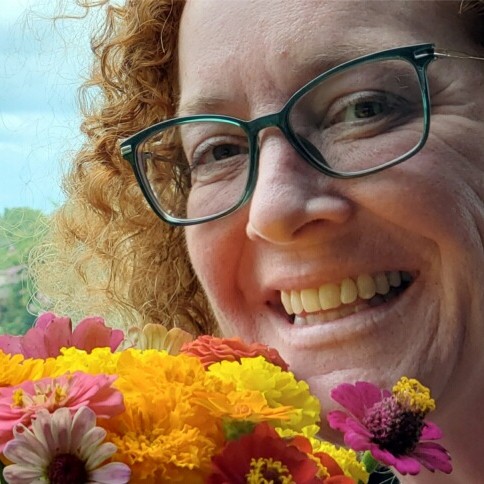 |
Growing up in Raleigh, Leigh frequented Lake Johnson, which was just a mile or two walkthrough the woods. She would swim and play around in nature and was quick to get intogardening when she was in elementary school. |
Another source of influence in Leigh’s youth was her participation in the Junior Curator Programwith the Museum of Natural Sciences in Raleigh. This program would allow students to volunteer, make presentations to schools and other groups, and work with the animals at the museum. Cleaning cages, changing turtle water, and feeding the snakes were all part of their duties in the museum. And at the end of the week, a guest speaker would make a presentation or the Junior Curators would go on some sort of field trip or have an activity. Leigh recalled counting oilbirds in Trinidad and whale watching in Maine!
Before getting into her horticultural groove, Leigh actually began working as a makeup artist for film and television! She told me that as enjoyable as it was, she really wanted to be able to set roots in one place instead of having to travel all the time with her crew. Leigh began landscape work on the side and from there, her career blossomed.
One of Leigh’s first landscaping projects was at a private estate for an artist. This assignment allowed Leigh to tap into her artistic abilities and create carefully curated garden beds, known as vignettes, around sculptures that the homeowner had purchased for her garden. After that project, Leigh worked with other landscaping companies installing large trees and landscapesas well as part-time for the City of Raleigh at The Raleigh Rose Garden.
Leigh told me what it was like working with the private industry and then going to work with the government. The city government has a budget for conservation projects and conducts public outreach to help community residents understand why conservation projects are important. She also mentioned that it is nice to work with the citizens of Raleigh, as they are very willing to learnand actively engage in park projects.
Leigh’s specific role at the City of Raleigh is as an urban forest inspector. This means that she works with development teams and contractors to install and maintain street trees, tree conservation areas, and tree protection fencing. She went on to say that street trees are considered infrastructure. As a result, street trees have to go through the same permitting processes as sidewalks, which leads to more protections for our urban canopy.
“We definitely don’t want infrastructure versus infrastructure conflicts. So, trees and sidewalks, more specifically tree roots and sidewalks, that’s a big one we run into a lot. We also have a relatively old canopy. So, willow oaks that were planted in a three-foot planting strip back in 1972 are now 54-inch monsters that we’re having to maintain. So, we do try to help with that.”
Leigh also collaborates with private entities and homeowners to minimize conflicts between people and trees in the public rights-of-way. If conflicts do exist, Leigh strives to resolve them by meeting with the homeowner; discussing their tree issues, and hopefully coming to a resolution. To top off her list of responsibilities. Leigh is a member of Raleigh’s first response team to address hazardous tree issues during storms.
After joining the City of Raleigh team, Leigh had an amazing mentor who went out of her way to assist her in networking and seizing opportunities for professional growth and advancement in her career. In a male-dominated field, Leigh’s mentor empowered her to see herself and the strong female representation that exist in urban forestry. This new perspective shaped Leigh’s current mindset.
When asked about the challenges she faces in her position, Leigh emphasized the difficulty of overseeing construction sites. Contractors often prefer to clear vegetation from the entire plot of land, as they think it is easier to work on a project with no trees in their way. Although there are regulations in place, such as tree protection fencing and inspections, violations occur frequently. Leigh acknowledged the complexities of the situation and understands the contractors’ perspective. She strives to foster a positive relationship with each construction team and incentivize on-site tree protection as much as possible.
Leigh observes positive progress in urban forestry, with regard to environmental education within the education system. She also recognizes more people in other professions are acknowledging the significance and impacts of trees within our urban communities. Leigh believes that education and advocacy are the most important drivers of establishing tree protection, but she can only teach those who want to listen. Leigh would like to see more opportunities for public outreach that she, and other city tree advocates, can attend; events like the annual festivals for Earth Day and Arbor Day. So, it is up to teachers and other educators to take the reins on environmental education, which Leigh thinks they are doing more than ever.
Leigh and I also talked about greenways and bike paths, something I am veryinterested in. Leigh would like to see funding moved away from vehicular traffic and towards greenways, to emphasize the importance of greenways as both a form of recreation and transportation.
Leigh wanted to say this to everyone reading my blog who is interested in pursuing a career in urban forestry:
“I would definitely say it’s a very competitive industry because there’s not a whole lot ofpositions. So be willing to be flexible. Be willing to be creative. Be willing to take maybe a part-time job or an internship and really build that resume. That networking piece is absolutely key.
“And if you specifically want to get into urban forestry and you’re not finding something right away, get a tree trimmer [that is, arborist] position for a while. I mean, it’s dangerous work, but super fun. And you get to play with all the great toys like bucket trucks, chainsaws, and knuckle booms. There are all kinds of avenues to reach a career in urban forestry.
“There are a lot of jobs in government because we are starting to take our trees more seriously. There are a lot of planning jobs where you just sit and review plans. [After reading each development plan] you may say, ‘Nope, you need this many trees,’ or ‘You need to conserve this [many trees].’ There are [government] jobs like mine. There are also jobs in horticulture because every municipality has a park, and somebody’s got to maintain that park.
“So, there are a bunch of avenues out there, but certainly, just be willing to learn everything, and constantly be curious. Just be willing to talk to people and express your interests because if you manage to engage someone who’s in the kind of career that you want, they’re going to do what they can for you. And they’re going to remember you and they’re going to say, ‘Oh, you know, I had this conversation, and I’m going to reach out to that person and say, ‘Hey, here’s a job opening.’ And [that form of networking is] probably true in every career, but certainly true in urban forestry.”
Meet an Urban Forest Advocate
Connie Parker
| I had the pleasure of interviewing the esteemed community advocate, Connie Parker. Throughout her life, Connie has been involved in the establishment of three separate organizations, experiencing both the challenges and successes that come with the establishment and growth of the groups. However, even before she had an inkling of the idea of these organizations, Connie reflected on her childhood spent in the woods and her mother's garden. | 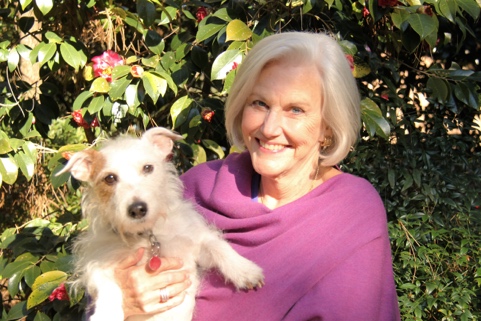 |
These early experiences naturally became an integral part of Connie's life, and she carried them with her to Florida after getting married. Connie observed the variations in plant species between North Carolina and Florida, developing a particular fascination for the orchids in the latter. She embarked on a personal endeavor to cultivate these beautiful plants, eventually transporting her collection of 300 orchids back to her home state of North Carolina.
Her interest in coastal ecosystems has always been a part of her from a young age, visiting the coast of NC with her family and even becoming a scuba diver by the time she turned 25. She saw the damage to the reefs firsthand from silt washing in from overdevelopment. A person that had influenced her thinking about marine ecosystems was author and Duke professor Orrin H. Pilkey. Reading his books was another eye opening experience for Connie, and she knew she had to be a part of helping marine and coastal ecosystems. As a volunteer with the Marine Resources Center in NC, now the NC Aquarium at Fort Fisher, she helped establish an education program that eventually became the Sea Scholar Program. This program has been ongoing since the 198080s and brings 5th-grade students to the aquarium for a full day, teaching them about marine ecosystems.
“I always used to say even if they never remember the names of these [species] or whatever it is that I'm trying to teach them, or if they don't remember what salinity is, that they remember that there's something very important about where they live... that you should understand and appreciate and know a little bit about it.”
However, Connie’s career plan didn’t involve environmental education until much later in life. In fact, she went to UNC-Chapel Hill for both her undergraduate and graduate degrees, speializing in psychiatric nursing education. After graduating from grad school, she got involved with her community, focusing specifically on environmental issues that impact community health. she initiated Wilmington Health Access for Teens in 1997, a program that aims to improve access to physical and mental health services for young adults and teens in New Hanover County. Connie served as the program's Executive Director for 10 years, expanding and opening health centers at four high schools between 1999 and 2016. These centers remain the “only integrated school-based health care provider in Wilmington, NC, exclusively for adolescents and young adults.
Connie was considering retirement when a City of Wilmington council member called her and asked if she could join the City's Tree Commission, which essentially serves as a small advisory body. Connie accepted the position and served on the commission for seven years. Afterward, she teamed up with other members and established the Alliance for Cape Fear Trees in 2015 to expand on outreach and solutions for urban tree conservation. She says that starting Cape Fear Trees brought her back to her love for the world around her and helped her to pay more attention to the small intricacies of life; to learn more about the trees she’s advocating for.
“I think what was meaningful to me was being able to actually go back to something that I cared about deeply and didn't realize how much I did. It gave me that opportunity to go back and do something about those kinds of things, to try to protect them, and bring other people around to understand why we think it's important.”
Circling back to Connie's childhood, she mentioned that she only realized much later in life the great impact her mother had on her perception of the world. Her mother's diligent and dedicated work in her garden mirrored Connie's own determination in establishing these organizations and caring for both the environment and her community. Additionally, Connie sees a reflection of herself in her children. Her daughter, currently living in St. Petersburg, Florida, is also cultivating orchids and surpassing Connie's own expertise in that area. Connie added, "She's growing better orchids than I can at this point." Connie's son holds a Master's degree in environmental education, but ironically, he chose to change his career path after graduation and pursue nursing! She told me these stories to emphasize that human and environmental health are greatly intertwined.
I was interested to hear Connie's perspective on the future of urban forestry, especially since she has been around many facets of environmental education and policy. She first emphasized the importance of collaboration between developers and urban foresters, stressing that both parties must recognize that trees are an investment. Connie shared an example of a highly regarded developer who, as an ex-officio board member, earned respect for creating a thriving community that is committed to "green" guidelines. She also noted, however, that this developer had not always hel such beliefs. It took several workshops at NC State University to inspire him to start making environmentally conscious decisions that would have a positive impact on the environment and ultimately benefit the community.
Connie’s passion for public and environmental health showed throughout the interview. She gave me hope in my personal interest to unite environmental planning and education with public health and well-being. For the teenagers and young adults reading this blog, Connie said this:
“Urban forestry is part of a bigger picture of environmental sciences or environmental education. Side by side with my other love, which is healthcare, I think that as far as jobs go and their impact on this world, I don't think there could be anything more effective than choosing to go into an urban forestry area, environmental sciences area, or in particular, going into an environmental education area. If you're a good teacher, there's nothing in the world that means more than teaching kids about environmental science.”
I also wanted to include this snippet of what Connie said about changing career paths and the stress that can come with not knowing what you want to do. This is something that I have struggled with personally and I related to what she said next.
“In a way, that four years [of college] is supposed to be a big stepping block. It really is not necessarily the end all be all. And I mean, certainly, for me, going into nursing, I didn’t have a long career. You don't ever lose the kinds of things you learn in undergraduate school. You can take what you've learned and carry it over, no matter what you end up doing as a career. It took me a while to kind of appreciate that. I would see people who left their four-year degree behind and went into something else, and didn't realize they really didn't leave it behind, it's always with them for whatever purpose."


